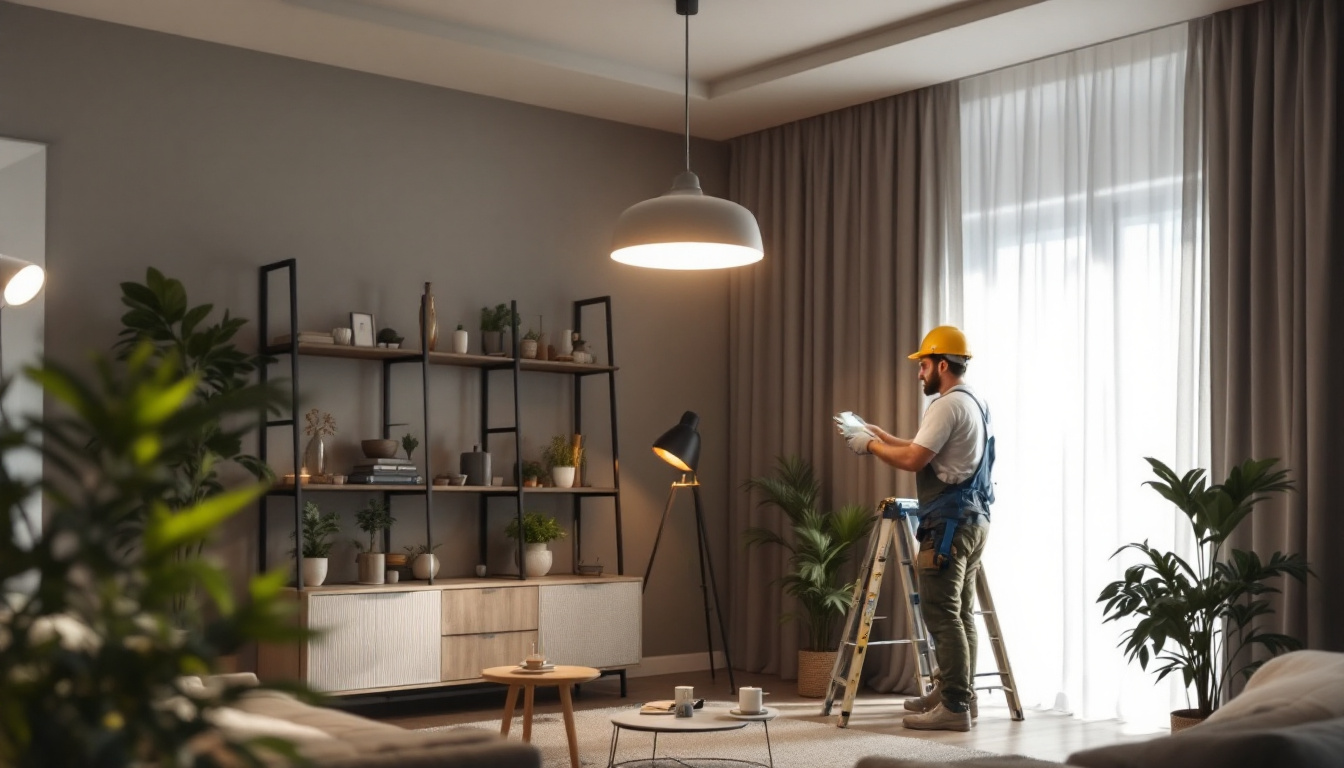
In the realm of smart lighting, understanding the differences between shunted and non-shunted configurations is crucial for contractors looking to optimize their installations. These terms refer to how the electrical circuits are arranged within the fixtures and can significantly impact the performance and functionality of lighting systems. This article delves into the nuances of both configurations, providing insights that can enhance your expertise and efficiency on the job.
A shunted configuration typically involves a single circuit that connects multiple lamps within a fixture. This means that if one lamp fails, the others may still operate, depending on the specific wiring setup. Shunted fixtures are often used in applications where continuous lighting is essential, such as in commercial environments.
One of the primary advantages of shunted configurations is their ability to reduce the number of wiring connections needed, which can simplify installation. However, it’s important to note that if a lamp goes out, it can affect the entire circuit, leading to potential downtime until repairs are made. Additionally, shunted configurations can be particularly beneficial in spaces that require uniform lighting, such as hallways or open office areas, where maintaining a consistent light level is key to functionality and safety.
In contrast, non-shunted configurations utilize separate circuits for each lamp, ensuring that the failure of one does not impact the others. This setup is commonly found in residential and decorative lighting applications, where maintaining functionality across multiple fixtures is critical.
The non-shunted approach allows for greater flexibility in design and can enhance the reliability of the lighting system. However, it often requires more wiring and connections, which can increase installation time and complexity. Moreover, non-shunted configurations can be particularly advantageous in environments where lighting aesthetics are paramount, such as galleries or theaters, where the ability to control each light independently can create dynamic visual effects and enhance the overall ambiance. This configurational choice also supports the integration of advanced lighting control systems, allowing for features like dimming and color temperature adjustments that can further elevate the user experience.
Understanding the key differences between shunted and non-shunted configurations is essential for making informed decisions during installations. Each type has its own set of benefits and drawbacks that can influence the choice based on the specific project requirements.
Shunted configurations generally offer a simpler installation process due to fewer wiring connections. This can be particularly advantageous in large-scale projects where time and efficiency are paramount. Conversely, non-shunted configurations, while potentially more reliable, may require more intricate wiring, which can lead to longer installation times. The ease of installation with shunted systems can also reduce the likelihood of errors during setup, which is crucial in projects with tight deadlines. Additionally, the straightforward nature of shunted systems can make them more appealing for DIY enthusiasts or smaller contractors who may not have extensive experience with complex wiring systems.
When it comes to reliability, non-shunted configurations often have the upper hand. Since each lamp operates independently, the failure of one does not compromise the entire lighting system. This is especially beneficial in environments where consistent lighting is critical, such as hospitals or schools. Shunted configurations, while easier to install, may lead to more frequent maintenance issues if a lamp fails. In settings where safety and functionality are paramount, such as in emergency exits or public spaces, the reliability of non-shunted systems can be a decisive factor. Furthermore, the maintenance of non-shunted systems can often be performed without disrupting the entire lighting setup, allowing for quick and efficient repairs without significant downtime.
Cost is always a significant factor in any lighting project. Shunted configurations may appear more cost-effective initially due to lower material and labor costs associated with installation. However, the potential for increased maintenance and downtime could lead to higher long-term costs. Non-shunted configurations may require a higher upfront investment but can save money in the long run by reducing maintenance needs. It’s also worth noting that the choice between shunted and non-shunted systems can impact energy efficiency. Non-shunted systems often allow for better energy management, as they can be equipped with advanced controls and sensors that optimize power usage, leading to further savings on utility bills over time. Additionally, when considering the total cost of ownership, factors such as the lifespan of the lamps and the frequency of replacements should also be taken into account, as these can significantly affect overall project budgets.
Deciding between shunted and non-shunted configurations involves careful consideration of the project’s specific needs. Factors such as the type of environment, budget constraints, and desired reliability will all play a role in this decision-making process.
Before making a decision, it’s essential to evaluate the specific requirements of the project. For instance, if the installation is in a high-traffic commercial space where lighting continuity is crucial, a shunted configuration may be more suitable. On the other hand, for residential settings where aesthetics and reliability are prioritized, a non-shunted configuration could be the better choice.
Engaging with clients and other stakeholders can provide valuable insights into their preferences and expectations. Understanding their priorities—whether they value cost savings, reliability, or ease of maintenance—can guide the decision-making process. This collaborative approach ensures that the chosen configuration aligns with the overall vision for the project.
Whenever possible, conducting tests or creating prototypes can help visualize how each configuration will perform in real-world conditions. This hands-on approach allows contractors to assess factors such as light distribution, ease of installation, and overall functionality before committing to a final decision.
For lighting contractors looking to enhance their skills and streamline their processes, several hacks can improve efficiency and effectiveness when working with shunted and non-shunted configurations.
One effective hack is to utilize pre-wired fixtures, which can significantly reduce installation time. These fixtures come with the necessary wiring already in place, allowing for quicker setups and minimizing the risk of wiring errors. This is particularly beneficial in large installations where time is of the essence.
Investing in high-quality tools can make a significant difference in the efficiency of installations. Tools designed specifically for electrical work can simplify tasks such as stripping wires, crimping connectors, and securing fixtures. Having the right tools on hand not only speeds up the process but also enhances the quality of the work being performed.
The lighting industry is constantly evolving, with new technologies and methodologies emerging regularly. Staying updated on the latest advancements, such as smart lighting controls and energy-efficient solutions, can provide contractors with a competitive edge. Attending workshops, webinars, and industry conferences can be invaluable for learning about new trends and best practices.
Even experienced contractors can make mistakes when working with shunted and non-shunted configurations. Being aware of common pitfalls can help avoid costly errors and ensure successful installations.
One of the most common mistakes is neglecting to thoroughly read the specifications for fixtures and components. Each product may have specific requirements for installation, and overlooking these details can lead to issues down the line. Taking the time to review specifications can save time and prevent complications during the installation process.
Local building codes and regulations can vary significantly, and it’s essential for contractors to be familiar with these requirements. Failing to adhere to local codes can result in fines, delays, or even having to redo work. Regularly consulting with local authorities and staying informed about changes in regulations is crucial for compliance.
After installation, it’s vital to conduct thorough testing of the lighting system. Some contractors may overlook this step, assuming that everything will function as intended. However, testing ensures that all components are working correctly and can help identify any issues before the project is completed. This step is especially important in commercial applications where lighting performance is critical.
The smart lighting industry is continuously evolving, with new trends and technologies shaping the future of installations. Understanding these trends can help contractors stay ahead of the curve and provide clients with the latest solutions.
One of the most significant trends in smart lighting is the integration with smart home systems. As homeowners increasingly seek convenience and automation, lighting systems that can be controlled via smartphones or voice-activated devices are becoming more popular. Contractors who can offer these integrated solutions will be well-positioned to meet client demands.
With growing concerns about environmental impact, sustainability and energy efficiency are becoming top priorities for many clients. Lighting contractors should focus on offering energy-efficient solutions, such as LED fixtures and smart controls that reduce energy consumption. Understanding the benefits of these technologies can help contractors provide valuable recommendations to clients.
Advancements in lighting control technologies are also shaping the future of smart lighting. From advanced dimming capabilities to occupancy sensors that automatically adjust lighting based on presence, these innovations enhance the functionality and efficiency of lighting systems. Keeping abreast of these advancements will enable contractors to offer cutting-edge solutions that meet evolving client needs.
In the competitive landscape of smart lighting, understanding the differences between shunted and non-shunted configurations is vital for contractors. By evaluating project requirements, engaging with stakeholders, and utilizing effective hacks, contractors can enhance their efficiency and deliver high-quality installations. Additionally, staying informed about industry trends and avoiding common mistakes will further solidify their expertise in the field. As the lighting industry continues to evolve, embracing these insights will ensure that contractors remain at the forefront of innovation, ready to meet the demands of their clients.
Ready to take your smart lighting installations to the next level? At LumenWholesale, we provide you with the highest quality, spec-grade lighting products at prices that can’t be beaten. Say goodbye to unnecessary markups and hello to a vast selection of reliable lighting solutions that meet rigorous industry standards. Plus, with free shipping on bulk orders, you can stock up on premium lighting without any hidden costs. Elevate your lighting game and enjoy the perfect combination of quality, affordability, and convenience. Visit LumenWholesale now for Wholesale Lighting at the Best Value, and light up your projects with confidence.

Discover why lighting contractors should prioritize LED home lighting fixtures in their projects.

Explore the rising significance of exterior hanging lanterns in the lighting industry.

Discover the essential checklist for lighting contractors focusing on LED light cans.

Discover budget-friendly lighting solutions with expert tips tailored for lighting contractors.